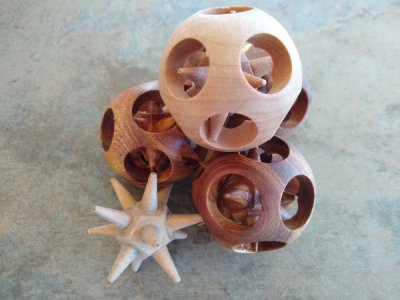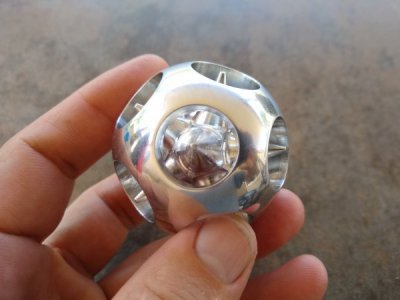- Joined
- Nov 1, 2018
- Messages
- 98
Typical radius/ball turning attachments we make for our lathes can't cut an ideal ball. They usually allow to turn the part of the ball surface and don't let you cut the ball off. The typical ball made with a typical radius turner usually has a threaded hole in the body, which was used to mount the piece of material on a bolt. Usually that's acceptable because the most of the balls we make for decorating the handles  . So, they have to have the threaded holes.
. So, they have to have the threaded holes.
But what if I need an ideal ball? OK, I have a couple of options here.
I can use a crown drill bit in the second spindle, aligned (almost) perpendicular to the first one. Or I can use a special radius cutter with a bar that was shaped for both turning and cutting-off. I don't really like the first option because I don't like the crown drill bits I've seen. And building a better radius cutter seemed easier for me. Here is the one I've recently built.
On the video above the wooden ball is close to completion. The finishing cut is being performed. One can see how the ball could be cut-off. Ball size is 2" diameter, the end mill is 5mm, or 3/16". Rotary spindle is 500W, 12500 RPMs at 50V supply. Lathe runs at 1000 RPMs on rough paths in the beginning and at 200 RPMs on final paths. Rotation of the lathe spindle is reversed, however I didn't notice a big difference between FWD and REV spindle directions.
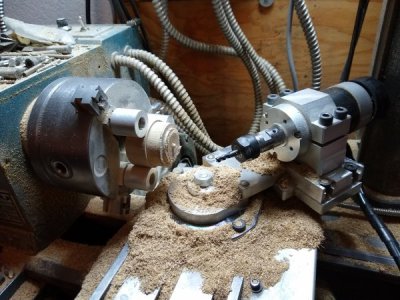
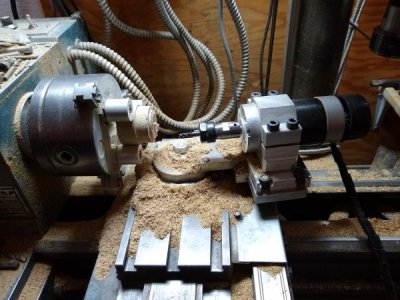
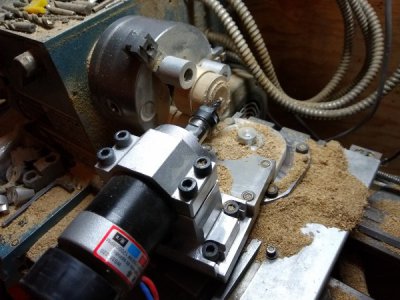
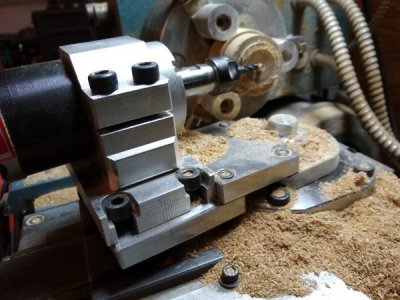
The cutter is made of 1/2" steel plate, 5/8" shank. Recess of 1/50" depth is machined on the upper plate to form a 3" slide bushing. A needle thrust bearing sits underneath the tightening nut. Rotary plate moves tight and smoothly.
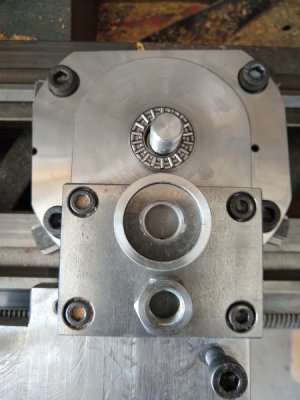
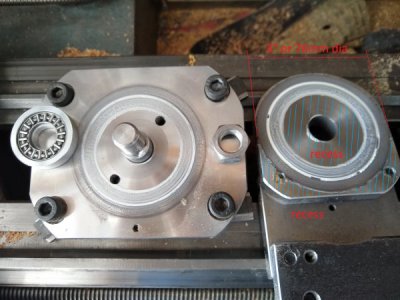
Plan to add an indexer for fixing the milling spindle in certain positions, and a fine radius adjustments.
Using this powered cutter on wood, but will definitely try it on aluminum soon.
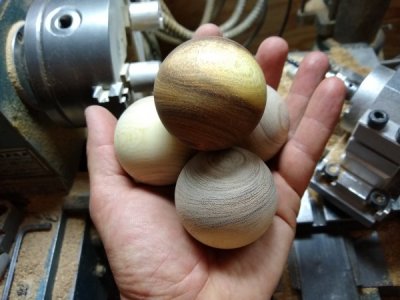
But what if I need an ideal ball? OK, I have a couple of options here.
I can use a crown drill bit in the second spindle, aligned (almost) perpendicular to the first one. Or I can use a special radius cutter with a bar that was shaped for both turning and cutting-off. I don't really like the first option because I don't like the crown drill bits I've seen. And building a better radius cutter seemed easier for me. Here is the one I've recently built.
On the video above the wooden ball is close to completion. The finishing cut is being performed. One can see how the ball could be cut-off. Ball size is 2" diameter, the end mill is 5mm, or 3/16". Rotary spindle is 500W, 12500 RPMs at 50V supply. Lathe runs at 1000 RPMs on rough paths in the beginning and at 200 RPMs on final paths. Rotation of the lathe spindle is reversed, however I didn't notice a big difference between FWD and REV spindle directions.




The cutter is made of 1/2" steel plate, 5/8" shank. Recess of 1/50" depth is machined on the upper plate to form a 3" slide bushing. A needle thrust bearing sits underneath the tightening nut. Rotary plate moves tight and smoothly.


Plan to add an indexer for fixing the milling spindle in certain positions, and a fine radius adjustments.
Using this powered cutter on wood, but will definitely try it on aluminum soon.


